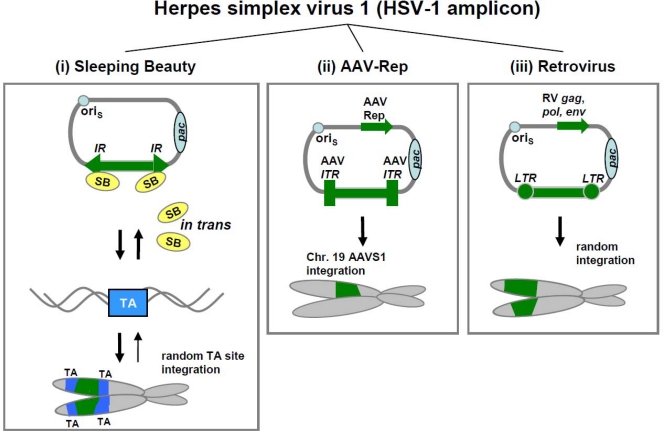Figure 3.
Mechanisms of herpes simplex virus 1 (HSV-1) amplicon based integrating hybrid vector systems. HSV-1 amplicon systems carry the HSV-1 origin of replication (oris), the HSV-1 packaging signal (pac), and the transgene flanked by specific elements necessary for the indicated integration machinery. The DNA is packaged as concatemers into the HSV-1 virions. (i) For Sleeping Beauty (SB) transposase mediated integration the transgene is flanked by inverted repeats (IRs). The SB protein, expressed in trans, binds to the IRs excises the transposon and results in reversible random integration in TA-sites in the host genome. (ii) The HSV-1/AAV-Rep amplicon hybrid vector leads to site-specific insertion of transgenes flanked by AAV inverted terminal repeats (ITR) into the AAVS1 site of human chromosome 19. The AAV-Rep protein is produced in cis. (iii) In case of HSV-1/retrovirus (RV) amplicon vectors the transgene incorporated between two long terminal repeats (LTRs) is translocated via the retroviral proteins Gag, Pol and Env. This leads to a random integration pattern.

